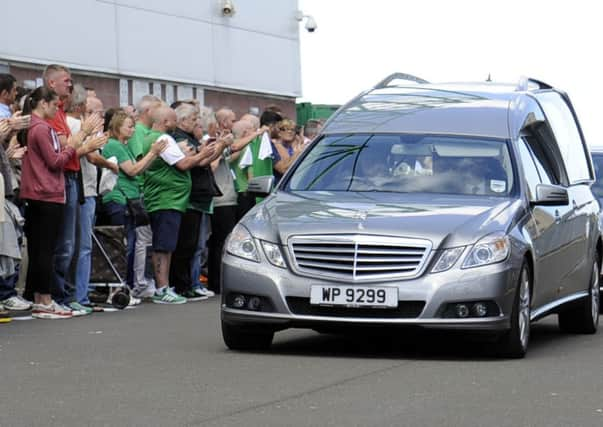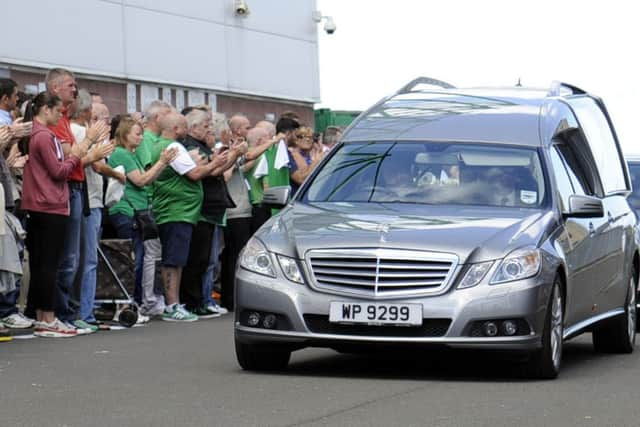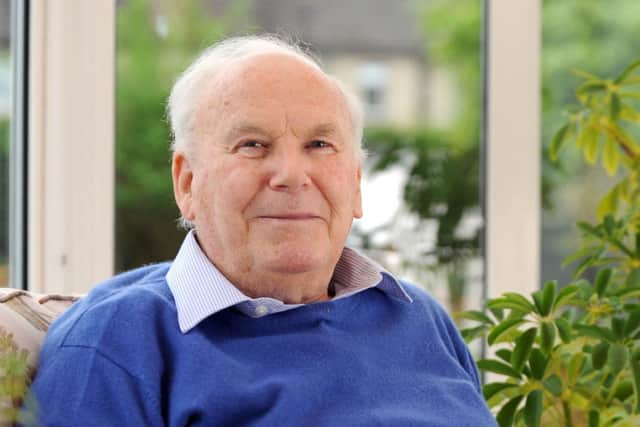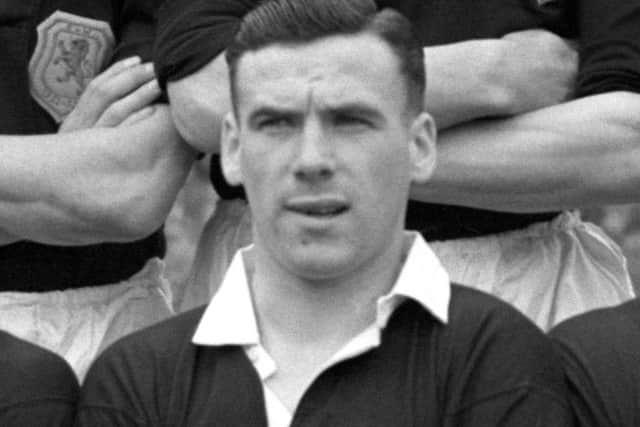Funeral for Hibs Famous Five hero Lawrie Reilly


Around 500 people turned out at Easter Road stadium to pay their respects to the last member of the Famous Five, as his funeral cortege was driven past the stadium where made his name.
And fans left dozens of signed shirts and scarves in tribute at East Stand
Advertisement
Hide AdAdvertisement
Hide AdAt a moving service Reilly was described as a gentleman with a big heart.


The 84-year-old was the last surviving member of the “Famous Five” forward line which helped the side win three league titles in the late 1940s and early 1950s. The striker also still holds the record for the most goals scored by a Scot against England.
He died in hospital in Edinburgh last Monday after a long battle with bone cancer and is survived by his wife, Iris, and son, Lawrence.
During the service at the city’s St Andrew’s and St George’s West Church, tributes were paid by broadcaster Grant Stott, former footballer Pat Nevin and author Ted Brack.
Advertisement
Hide AdAdvertisement
Hide AdForth One DJ Mr Stott, who came to know Reilly well through hosting hospitality at Hibs games, said he would be remembered as a gentleman who had time for everyone.


Mr Nevin said Reilly was a “winner” who played with style, panache and imagination and made the dreams of fans come true.
Off the pitch he was loved and deeply respected for being “generous, self effacing and a gentleman,” he said.
Mr Brack, who co-wrote Reilly’s autobiography, said he would have been a multi-millionaire player today but was a man in a million besides.
Advertisement
Hide AdAdvertisement
Hide AdThe “big-hearted” footballer was “intelligent, cheerful, determined, full of interest and completely loyal”, he said.


Former Hibs players also paid tribute to the “legendary” footballer outside the church in George Street.
Close friend Tommy Preston knew Reilly from the age of 16 when he was a player with Edinburgh Thistle, Hibs’ nursery team at the time.
“To me he was a great lad, one of the very best,” he said. “He was an excellent player, full of fire. He had the fire in his belly all the time.”
Advertisement
Hide AdAdvertisement
Hide AdFormer Hibs coach John Fraser said Reilly and the other members of the Famous Five, Gordon Smith, Bobby Johnstone, Eddie Turnbull and Willie Ormond, helped him and other younger players breaking through.
“He was up there with the greatest. He was not only a Hibernian legend, he was a Scottish team legend. The whole of Scotland at that particular time knew who Lawrie Reilly was, and he never let them down,” Mr Fraser said.
Pat Stanton, former Hibs captain and manager, said he had seen Reilly play at Easter Road as a boy and later came to know him as a friend.
“He was a really nice man, a terrible loser - he loved to win and loved to beat you - but he was a really nice man and it was a pleasure knowing him,” he said.
Advertisement
Hide AdAdvertisement
Hide AdReilly was a quiet man with a great sense of humour, and a terrific player, Stanton said.
“He would score goals today. He got the name of Last-Minute Reilly where he scored a lot of goals very late in the game and that was just him, he just played till the game was finished.”
Calls for a permanent tribute with a statue of Reilly and the other members of the Famous Five have been made by fans and backed by council leaders.
Stanton said: “I think that would be a great idea. I can’t think of any more deserving case than that. They are synonymous with the history of the club. Their names will live on as long as the club stands.”
Advertisement
Hide AdAdvertisement
Hide AdReilly made his debut as a 17-year-old and played his entire career with Hibs, scoring 238 goals. He also played 38 times for Scotland, scoring 22 goals, including a record of five against England.
There was a minute’s applause to celebrate Reilly before Hibs’ Europa League match with Malmo last week. The team will also wear shirts embroidered with Reilly’s name during the league game with Motherwell this weekend.
Instead of flowers the family have asked for any donations to be made to cancer research at the Western General Hospital.